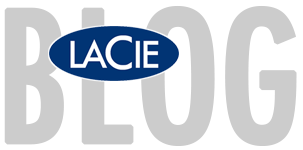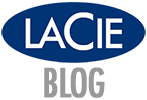“When I’m producing a record for somebody, it’s my job to capture the emotion and their stories,” says Nashville producer Evan Sieling. “Then it’s also my job to preserve that data and make sure nothing happens to it.”
Watch the video, and then read below, as Evan describes how the LaCie 2big Dock revolutionized his workflow by centralizing and protecting data.
How can a music producer create a recording environment to inspire great musical storytelling? Evan Sieling offers his thoughts and experience:
My name’s Evan Sieling. I’m a producer in Nashville, Tennessee. I have a studio in my home because I feel like it breaks down some of the barriers that a commercial environment creates.
I want to feel like the artists I work with are inspired from the moment when they walk into my house, and nothing’s off limits creatively for them. The room is full of instruments, and everything’s ready to go — so as soon as a moment of inspiration strikes, we’re ready to create.
Why my home, my personal space, makes the perfect recording studio
It’s a great thing to live in the upstairs of my house, with the studio downstairs. I like how easy it is to basically walk downstairs in the morning, and the room is ready for me to create. And I can also work really late at night and I don’t have to worry about driving home.
Whenever I feel like I’m in a moment, or I have something I want to express, I can do it right away. An artist could come over at 2:00 a.m. if they want, and cut a vocal — if they feel like that’s when they have to do it. We don’t have to book studio time. We don’t have to plan ahead for a lot of things. We can allow some of that spontaneity to just flow.
Most of the work that I do is with singer songwriters. Often, they come in with a song on a guitar, and then I take that song and say, “OK, how do I bring that to life, and how do I tell their story through the instruments we’re choosing and the microphones that I use?” Because we’re in my house, it’s a really honest environment. My dog is here. The fridge hums. You know, it’s not like this perfect pristine place — and I think that helps open people up.
How does a music producer make a recording artist comfortable?
I want people to feel they’re in a safe place, because they’ll maybe be comfortable enough to record a song that they wouldn’t sing for an ex-boyfriend or for their mother. It’s empowering for me to give people a platform, and also to protect that creativity.
I love how personal it is between one person and myself. There’s no door, no barriers between us — essentially we’re not trying to please ten people, we’re just trying to tell this person’s story. And I really feel a lot of fulfillment out of that.
We can do whatever we want; we can record the song however we choose.
How to prepare a recording studio to inspire and capture the artist’s story
When I’m producing a record for somebody it’s my job to capture the emotion and their stories. So I’m trying to create space to capture that. I’ve tried to set up the gear I have so that every piece is inspiration; every guitar has some special sound to it, or character like my old piano has — every piece of gear has a sound or its own story to tell.
And then it’s also my job to preserve that data and make sure nothing happens to it. So I never want to start a session unprepared.
The hard drive is kind of a baseline foundation when you’re creating, because we have to put our content somewhere. So the less that I have to worry about finding files, or storing files, the more I can spend time actually creating music with people.
How much digital storage does a recording session require?
Producing and recording music requires a significant amount of storage. When you stream a song on Spotify, or you download a song on iTunes, it’s pretty small. But in reality, during production that song is made up of dozens and dozens of really large files, and those files are people’s stories and emotions that we very carefully captured. The actual base files for each track can run from 50 to 100 Gigabytes for a song, and a whole project can take up to a Terabyte.
So the storage is crucial to actually being able to capture somebody’s performance, and keep it safely.
Also, I think centralizing all of my files in one place helps me know where everything is — so I never have to search for a sample, or dig through an old box of hard drives. Before I started using the LaCie 2Big Dock, I had a hodgepodge of different portable drives, so if I needed a file I would have to search through all of these drives. It’s just a real time waster.
Easier to record to, and easier to access session files
Using the 2big Dock, I don’t have to search through a random assortment of old portable hard drives that I’ve done different projects on. It’s all centralized in one place.
One of the cool things about this drive is that you can record directly to it. One of the issues that I had using smaller portable drives is that I was either recording on my internal disk, or I was recording onto a slower external drive so sessions might choke in the middle of a session while recording somebody. With the 2big Dock that doesn’t have to happen anymore.
The LaCie 2big Dock also has a USB hub on the front of it. If you’re plugging in USB tools like the iLock that enables your audio workstation software, or a keyboard or other midi controllers, it’s really convenient to just plug it into the front of the Dock. It’s just really convenient to be able to get right into the front, instead of having like reach around and find a USB port on the back of my computer.
My goal: to create without barriers and limitations on my workflow
It really just comes down to being able to create without barriers and limitations on my workflow. I love using old gear to tell these artists’ stories, but of course old gear can break down a lot. One of the things I love about these drives is that I can rely on them to capture and preserve that story so that nothing happens to it.

